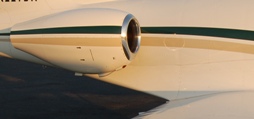Reports of engine surges, some serious enough to require single-engine landings, have prompted the US Federal Aviation Administration to limit the maximum altitude at which the Pratt & Whitney Canada PW610F-A-powered Eclipse Aviation EA500 twin-jet can fly.
According to a final airworthiness directive (AD) issued today and taking effect 4 December, Eclipse operators will not be allowed by fly above 37,000ft, nearly a mile below the aircraft’s maximum certificated altitude of 41,000ft (12,500m).
The issue emerged when an operator flying at 40,000ft experienced a “shudder” from the right engine and received a “RT engine exceedance” alert from the crew alerting system, according to the FAA. The crew reduced power to idle and the shudder disappeared, though an increase in throttle at roughly 10,000ft brought back the shudder. The crew ultimately safely landed the aircraft using single-engine procedures.

An investigation by Pratt & Whitney Canada (PWC) revealed that when the PW610F is operated above 37,000ft for more than 1h with high bleed-air flow, “hard carbon forms due to high local fuel air ratio near the combustor wall,” according to the AD. The hard carbon can then break loose and block one of the high pressure turbine vane gas path passages, causing the surges.
The FAA says there have been “several” reports of engine surges that have required reduced power, and, in some cases the engine power was unrecoverable and remained at reduced power for the remainder of the flight.
The FAA says the altitude limitation is a temporary fix to the problem, but that Transport Canada, the certification authority for the engine, and PWC “are considering potential actions to address the engine aspects of this condition.”
Transport Canada and PWC could not be reached for immediate comment.
Source: FlightGlobal.com
















